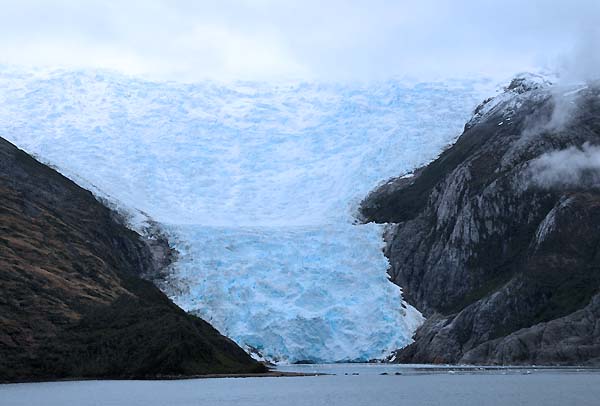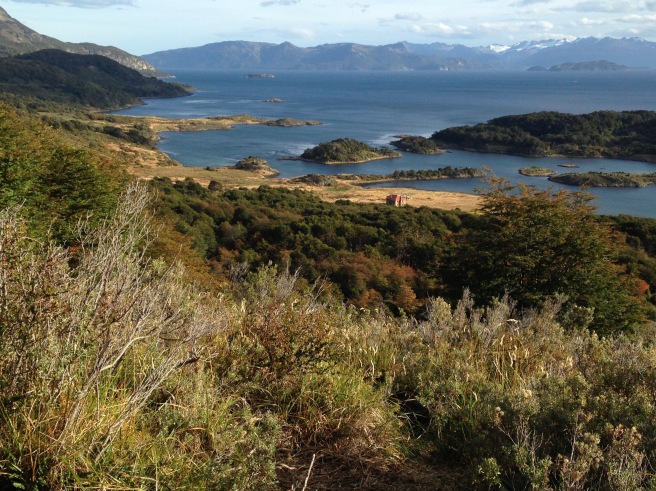The Stella Australis is a small ship, built to withstand the turbulent waters near Cape Horn. We board in Punta Arenas. On our way to Cape Horn, we see glaciers and more glaciers. Along what is commonly called Glacier Alley, the Beagle Channel boasts a series named for European countries. As our ship passes each of those glaciers, we enjoy hors d’oeuvres from the respective countries in the ship’s lounge. Nice touch.


(Glacier photos courtesy of WorldAtlas.com.)

Off the Beagle Channel is a waterway called Murray Channel. And a little bay on the Murray Channel side of Navarino Island is known as Wulaia.

This bay is beautiful, just like the name says. In the native language, -aia means bay (bahía in Spanish) and Wul- means beautiful. There is no other way to describe it. Definitely worth a visit if you happen to be on a ship in Chile’s Murray Channel off Beagle Channel, and near Cape Horn.
A stop at Wulaia Bay is calming. One can walk around the flat beach area and visit a museum that focuses on the native people and on Charles Darwin’s visit,  or take a not-too-difficult hike that leads to an overlook where one can just sit and soak up the beauty.
or take a not-too-difficult hike that leads to an overlook where one can just sit and soak up the beauty.

Wulaia Bay is at the top of the list for beautiful, but the human history is equally unique and interesting. This island was the home of the Yaghan people (also Yagán or Yámana), pre-Columbian natives who survived the cold unclothed. It is said that they even had fires in their canoes, perhaps leading to the name Tierra del Fuego.

Wulaia Bay was a seasonal settlement of these nomadic inhabitants. Charles Darwin went ashore here on January 23rd, 1833 during his voyage onboard the HMS Beagle and commented on seeing the Yaghan people. The small museum contains some nice displays.
The remaining Yaghan people, mixed blood descendants of natives and the first non-native colonists, live in or near Puerto Williams. The original Yaghan or Yagán referred to themselves as Yámana (meaning “person” in their language), and Yámana is the term favored by our guides.
More can be found on-line, of course, about missionaries who led to the decimation of the natives, about a massacre, and about the good work of Thomas Bridges who, in the late 1800s, wrote the language of the Yaghan people. An interesting anthropological take in Ancient Pages.

Our guides speak of Christina Calderon with pride. She is the last remaining full-blooded Yámana and last speaker of the Yaghan language.
Date of travel: March 2018


Fascinating! The beauty and the history are both special! Thanks for sharing these pictures of your journeys.
LikeLike
Thanks for being a faithful reader, Cathy!
LikeLike